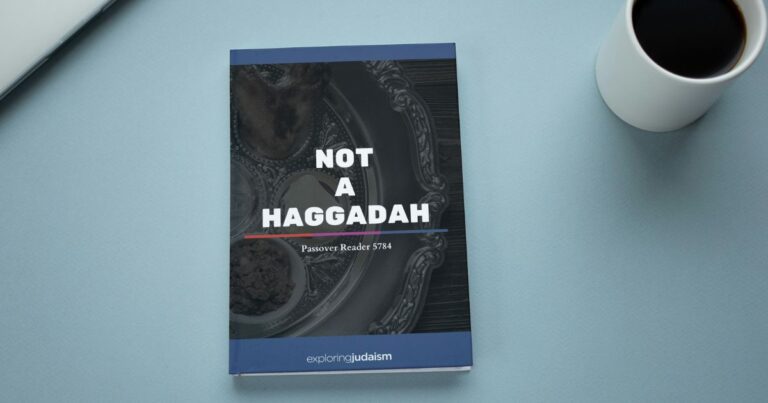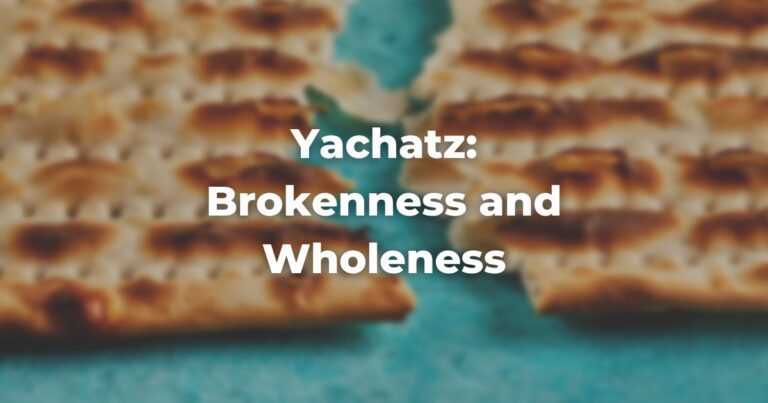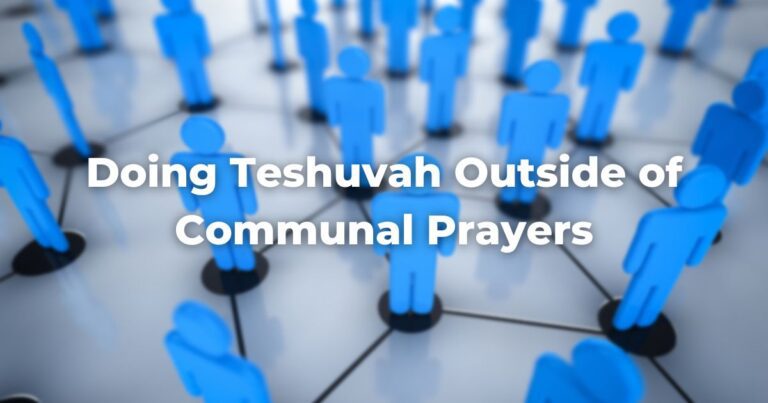A few years ago on a Friday afternoon at Camp Ramah New England, two of our friends got engaged. As the good news spread, people asked why that particular day. In fact, that Friday was Tu B’Av, a day sometimes referred to as the Jewish “Valentine’s Day.”
What is Tu B’av?
Tu B’Av is the fifteenth day of the Hebrew month of Av. Tu is Hebrew shorthand for 15 (the Hebrew letter Tet is 9 and the Hebrew letter Vav is 6).
Rabban Shimon Gamliel, a major first century sage, describes Tu B’Av like this:
There were no days as joyous for the Jewish people as Tu B’Av and Yom Kippur, as on them the daughters of Jerusalem would go out in white clothes, borrowed, so as not to embarrass one who did not have. …
The daughters of Jerusalem would go out and dance in the vineyards. What would they say? “Young man, please lift up your eyes and see what you choose for yourself. Do not set your eyes toward beauty, but set your eyes toward [a good] family, ‘Grace is deceitful and beauty is vain, but a woman who fears the Eternal, she shall be praised’ (Proverbs 31:30), and it says: ‘Give her the fruit of her hands, and let her works praise her in the gates’ (Proverbs 31:31). …”
(MishnahA collection of rabbinic teachings edited in Israel around 225 CE. Organized in six sedaraim by subject matter and dealing with both ritual and civil law. Both the Jerusalem and Babylonian Talmud are expansive discussions of the Mishnah. Read more Ta’anit 4:8)
According to this mishnah, Tu B’Av was like “Sadie Hawkins Day,” a fictitious holiday which first appeared in the Al Capp comic strip Li’l Abner (1934-1977), the premise of which was that on that day women would ask men to either a dance or out for a date, rather than the norm of men asking women.
On Tu B’Av, young women would go dance in the vineyards, presumably where young men also were, and rather than appeal to their appearance, they would ask the young men to focus on their good lineage and pious deeds. Thus, Tu B’Av has become known as a good day for people to find their husband or wife.
The Significance of the Day Itself
But why this day at all? Rav Ovadia from Bartenura gives us some background in a comment on this mishnah:
“For on that day, ended the deaths of the Wilderness in the fortieth year.” In Parshat Shlach Lecha, ten scouts returned from Canaan with a negative report, demoralizing everyone. God decreed that all those over 20 when they left Egypt would die in the Wilderness over 38 years. Tu B’Av marks the day the last of that generation died.
“On it was abolished those guards which Jeroboam…placed who prevented the Israelites from going up to Jerusalem on the Festivals.” After King Rechov’am split the kingdom, he blocked people from visiting the Temple in Jerusalem. On Tu B’Av, King Hoshea removed those guards, renewing unity for Israel.
“Those who had died in Betar were given up for burial.” After the Bar Kochba Rebellion in 135, Romans refused burial of the dead from Betar for over a year. This distress ended on Tu B’Av.
“They stopped cutting down trees for the wood for the altar in the Temple.” During the early Second Temple period, families annually brought wood to the Temple. The final delivery was on Tu B’Av, marking a shift from summer’s heat to the cooler autumn.
(Bartenura on M Taanit 4:8:1)
Another moment of Israel’s tribal unity is ascribed to this date. At the end of the Wilderness period, orphaned daughters like those of Tzelofchad were limited to marrying men within their own tribe (Numbers 36). According to rabbinic tradition, after the conquest of Canaan, this ban was lifted on Tu B’Av.
The TalmudReferring to one of two collections, the Jerusalem and Babylonian Talmuds, edited in the 6th century, that contains hundreds of years of commentary, discussion, and exploration of the ideas in the Mishnah. One could describe it as Mishnah + Gemara = Talmud Read more mentions connects another moment to Tu B’Av that also marks a shift from death to life:
“Rabba bar bar Ḥana says [in the name of] Rabbi Yoḥanan: [This was the] day when the tribe of Benjamin was permitted to enter into the congregation [of Israel through marriage] (see Judges, chapters 19–20). As it is written: “And the men of Israel had taken an oath in Mizpah, saying: None of us shall give his daughter to Benjamin as a wife” (Judges 21:1). What did interpret [that enabled them to dissolve this vow]?“[None] of us,” and not: [None] of our children.” (Bava Batra 121a)
In the book of Judges, the tribe of Benjamin permits a horrific act (Judes 19), and the other tribes kill the Banjaminite men, and take a vow to never marry into that tribe again. However, they realized that they almost annihilated one of the tribes of Israel. It was on Tu B’Av that they “found” the workaround for their oath against marrying into the tribe of Benjamin (their children can do so, even if they themselves could not), thus bringing the tribe of Benjamin back from the brink of extinction.
Bringing Some Love and Joy Into the Mournful Summer
Over and above the events that Tu B’Av commemorates, its placement in the Jewish calendar also speaks to the nature of the day. Tisha B’Av, the ninth day of Av, the day commemorating a series of Israel’s lowest points, moments of intense mourning and grief, comes just six days before Tu B’Av, providing a sharp contrast between the day of national collective mourning and a day that speaks to the renewal of life and of love.
Yom Kippur also focuses on the renewal of life, since on that day we are confident that God will write us in the Book of Life for a good year. Both Tu B’Av and Yom Kippur are also post-harvest celebrations. Tu B’Av comes after the grain harvest, and Yom Kippur after the fall harvest.
Tu B’av in Modern Times
In modern times, as we saw with our friends who got engaged on this day, Tu B’Av became the Jewish equivalent of Valentine’s day. In Israel, it is also known as Chag Ha-Ahavah, the Festival of Love. It became a day for matchmaking, weddings, and marriage proposals. In addition, it is a day for increasing TorahRefers to the first five books of the Hebrew Bible, the Tanakh, also called the Five Books of Moses, Pentateuch or the Hebrew equivalent, Humash. This is also called the Written Torah. The term may also refer to teachings that expound on Jewish tradition. Read more study, since Torah is God and Israel’s “love language,” and since the days are getting longer, that means more time to study.
Tu B’Av may be a relatively obscure day on the Jewish calendar. But it carries with it those moments where there was a shift from death and destruction to love and joy. That is something that we could all use a little more of today.
Author
-

Rabbi Andrew Pepperstone meets people where they are, balances tradition and innovation, and cultivates many pathways into Jewish living. Currently serving Ahavath Achim Congregation in Wichita, KS, he has worked in many settings: congregations, youth groups, adult education, and day school. Rabbi Pepperstone is also involved in rabbinic professional development, interfaith dialogue, and social justice. Ordained by JTS in 2002, he also holds a BA in Linguistics with a Minor in Hebrew from USCD. In addition, Rabbi Pepperstone is a cook and baker, board game enthusiast, Hebrew grammar guru, stand-up comedy aficionado, Star Wars expert, and pop culture trivia master.
View all posts






